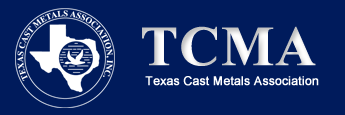|
|
|
|
'Inside the TCMA' featured Article |
|
AFS Government Affairs Committee Update |
|
Stephanie Salmon, AFS Washington Office | August 26, 2016 |
|
|
On July 21st, the GAC held a conference call on the
continuing issues facing our industry. Below are the latest
updates on some of the challenging concerns:
Opposition to OSHA’s silica standard triggered a number of
lawsuits from construction and manufacturing groups arguing the
new rule is economically and technologically impossible to
implement. The U.S. Chamber of Commerce, as well as producers of
cement and concrete block are dropping their stand-alone legal
challenge to OSHA's new silica standards and are instead seeking
to intervene in support of the brick industry's suit. Lawsuits
challenging OSHA's crystalline silica were consolidated in the U.S. Court of Appeals for the D.C. Circuit Court. |
| |
| |
The court hasn't moved on our case - no briefing
schedule, no order acting party. The court has
flexibility to dictate how the case will proceed. |
| |
|
| |
Our strategy stays the same - focus on technological
feasibility, economic feasibility and the gap between
the two - they don't match up. We are waiting for the
court to announce next steps on briefs. There will be a
panel of 3 judges that will hear the case. They have not
yet been appointed. |
|
| |
OSHA Penalty Increases: OSHA on schedule to
boost maximum penalties for safety and health violations by
almost 80 percent to catch up with inflation since 1990, after
the White House Office of Management & Budget (OMB)
recently completed review of the rule scheduled to take effect
on Aug. 1. State-plan OSHA states, will be required to adjust
their state penalties so that they at least match those imposed
under the federal standards. The top penalty for serious
violations will rise from $7,000 to $12,471. The maximum
penalty for willful or repeated violations will increase from
$70,000 to $124,709. To best protect against potential exposure
to the new penalties, foundries should conduct internal audits
to make sure that all their safety programs are in compliance
with OSHA standards.
Persuader rule: Good news - Texas District Court issued a
preliminary injunction blocking the DOL from implementing and
enforcing its new "persuader" rule which was set to go into effect on July 1. The persuader rule requires employers as well
as their labor advisors (including attorneys and consultants) to
publicly disclose agreements and arrangements that have long
been exempt regarding collective bargaining and union
organization rights, or obtain information concerning union or
employee activities in connection with a labor dispute involving
the employer. Motions for summary judgment will be filed in
Aug., making it possible, to resolve the case before 2017. The
Labor Department has until August 26 to appeal the injunction
against the regulation.
EEOC: The equal employment Opportunity Commission issued in July
revisions to its proposed EEO-1 pay data collection report. The
current EEO-1 form requires employers with at least 100
employees to report employment data by sex, race and ethnicity.
The revised form would add information on total compensation and
actual hours worked as reported on W-2 forms with the 2017 EEO-1
reporting cycle. The new collected pay data is designed to give
the EEOC more information about compensation disparities and
flag possible patterns or instances of discrimination. The
business community is concerned that W-2 is too broad and won't
be an accurate indicator of pay. The W-2 doesn't accurately
reflect any type of benefit that is not taxed, such as dependent
care and 401K employer contributions.
|
|
|
